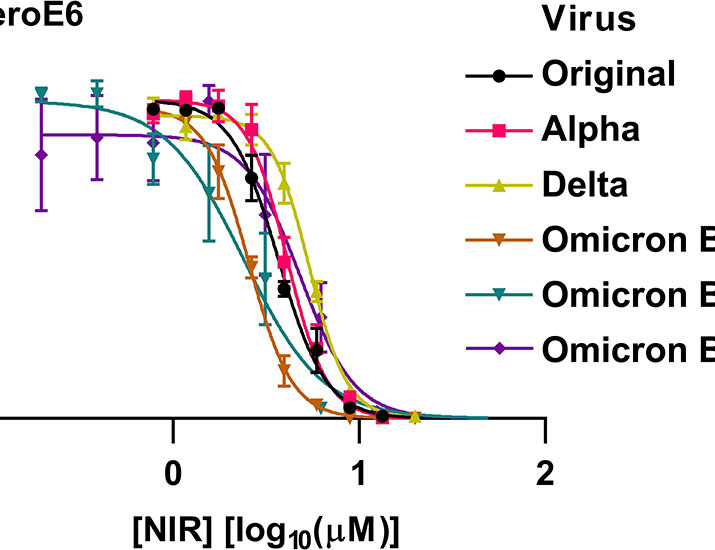Yuyong Zhou:
ORCID: https://orcid.org/0000-0001-6330-3170
Role: ConceptualizationRole: Formal analysisRole: InvestigationRole: MethodologyRole:
SoftwareRole: ValidationRole: VisualizationRole: Writing - review & editing
Karen Anbro Gammeltoft:
ORCID: https://orcid.org/0000-0003-0469-767X
Role: ConceptualizationRole: Data curationRole: Formal analysisRole: Funding acquisitionRole:
InvestigationRole: MethodologyRole: Project administrationRole: ValidationRole: VisualizationRole:
Writing - original draftRole: Writing - review & editing
Line Abildgaard Ryberg:
ORCID: https://orcid.org/0000-0002-5301-0232
Role: ConceptualizationRole: Formal analysisRole: InvestigationRole: MethodologyRole:
SoftwareRole: ValidationRole: VisualizationRole: Writing - original draftRole: Writing
- review & editing
Long V. Pham: Role: Investigation
Helena Damtoft Tjørnelund:
ORCID: https://orcid.org/0000-0001-8648-3266
Role: Formal analysisRole: InvestigationRole: MethodologyRole: ValidationRole: Visualization
Alekxander Binderup:
ORCID: https://orcid.org/0000-0001-7344-433X
Role: InvestigationRole: Validation
Carlos Rene Duarte Hernandez: Role: InvestigationRole: Writing - review & editing
Carlota Fernandez-Antunez: Role: Investigation
Anna Offersgaard:
ORCID: https://orcid.org/0000-0002-7748-2840
Role: InvestigationRole: Writing - review & editing
Ulrik Fahnøe:
ORCID: https://orcid.org/0000-0002-2527-5751
Role: ConceptualizationRole: InvestigationRole: MethodologyRole: SoftwareRole: VisualizationRole:
Writing - review & editing
Günther Herbert Johannes Peters:
ORCID: https://orcid.org/0000-0001-9754-2663
Role: ConceptualizationRole: Data curationRole: Formal analysisRole: InvestigationRole:
MethodologyRole: ResourcesRole: SoftwareRole: ValidationRole: VisualizationRole: Writing
- original draftRole: Writing - review & editing
Santseharay Ramirez:
ORCID: https://orcid.org/0000-0003-3699-1814
Role: ConceptualizationRole: Funding acquisitionRole: MethodologyRole: Project administrationRole:
ResourcesRole: SupervisionRole: Writing - review & editing
Jens Bukh:
ORCID: https://orcid.org/0000-0002-7815-4806
Role: ConceptualizationRole: Funding acquisitionRole: MethodologyRole: Project administrationRole:
ResourcesRole: SupervisionRole: ValidationRole: Writing - review & editing
Judith Margarete Gottwein:
ORCID: https://orcid.org/0000-0003-2805-0256
Role: ConceptualizationRole: Data curationRole: Formal analysisRole: Funding acquisitionRole:
MethodologyRole: Project administrationRole: SupervisionRole: ValidationRole: VisualizationRole:
Writing - original draftRole: Writing - review & editing
Journal ID (nlm-ta): Sci Adv
Journal ID (iso-abbrev): Sci Adv
Journal ID (publisher-id): sciadv
Journal ID (hwp): advances
Title:
Science Advances
Publisher:
American Association for the Advancement of Science
ISSN
(Electronic):
2375-2548
Publication date Collection:
December
2022
Publication date
(Electronic, pub):
21
December
2022
Volume: 8
Issue: 51
Electronic Location Identifier: eadd7197
Affiliations
[
1
]Copenhagen Hepatitis C Program (CO-HEP), Department of Infectious Diseases, Copenhagen
University Hospital–Hvidovre, 2650 Hvidovre, Denmark.
[
2
]CO-HEP, Department of Immunology and Microbiology, Faculty of Health and Medical Sciences,
University of Copenhagen, 2200 Copenhagen, Denmark.
[
3
]Department of Chemistry, Technical University of Denmark, 2800 Kongens Lyngby, Denmark.
Author notes
[†]
These authors contributed equally to this work.
Author information
Article
Publisher ID:
add7197
DOI: 10.1126/sciadv.add7197
PMC ID: 9770952
PubMed ID: 36542720
SO-VID: 65c8f24f-7db8-434a-83ec-406f3573080f
Copyright © Copyright © 2022 The Authors, some rights reserved; exclusive licensee American Association
for the Advancement of Science. No claim to original U.S. Government Works. Distributed
under a Creative Commons Attribution License 4.0 (CC BY).
License:
This is an open-access article distributed under the terms of the
Creative Commons Attribution license, which permits unrestricted use, distribution, and reproduction in any medium, provided
the original work is properly cited.
Funded by:
FundRef http://dx.doi.org/10.13039/100009584, Toyota Foundation;
Funded by:
FundRef http://dx.doi.org/10.13039/501100004543, China Scholarship Council;
Funded by:
FundRef http://dx.doi.org/10.13039/501100011747, Novo Nordisk Foundation Center for Basic Metabolic Research;
Funded by:
FundRef http://dx.doi.org/10.13039/501100013826, Candys Foundation;
Funded by:
FundRef http://dx.doi.org/10.13039/501100013826, Candys Foundation;
Funded by:
FundRef http://dx.doi.org/10.13039/501100013826, Candys Foundation;
Funded by:
Innovation Fund Denmark;
Funded by:
Danish Agency for Science and Higher Education;
Funded by:
Weimann Foundation;
Funded by:
Amager and Hvidovre Hospital Research Foundation;
Funded by:
Region H Foundation;
Funded by:
Independent Research Fund Denmark;
Funded by:
Mauritzen la Fontaine Foundation;
Funded by:
Region H Foundation;


